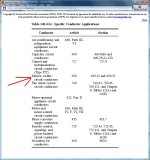You and I usually agree on what the NEC says you can do. However this time I have to disagree on a few things.
The NEC does not cover extension cords, period. UL and other testing laboratories probably follow the amperage charts listed in section 400 of the NEC when writing their standards. But the NEC does not cover cord assemblies.
There are several cases where the conductor sizes you listed can be protected at a higher amperage than what the charts you are reading says they can be. Look at the asterisk for 14, 12 and 10 wire listed in Table 310.16. The asterisk says to look at 240.4(D). 240.4(D) refers you to sections 240.4(E) through (G). 2404(G) is for Specific Conductor Applications. Notice the chart there? Air Conditioners, welders, motors and so on have different rules for ampacity. Some welder conductors can be fused at 200% of their ampacity. Some motor conductors can be fused at 800%. So 310.16 is for general wiring, but there special exceptions for certain conditions.

